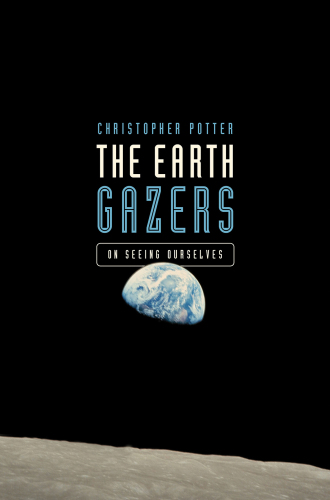
The Earth Gazers
کتاب های مرتبط
- اطلاعات
- نقد و بررسی
- دیدگاه کاربران
نقد و بررسی

November 27, 2017
In this sweeping chronology of human flight, British writer Potter (How to Make a Human Being) traces aviation and rocketry from the WWI era into the space age. It’s a distracted narrative, and amid the vast cast of characters three influential pillars emerge: Robert Goddard (1882–1945), a pioneering rocketeer and a smart but often paranoid eccentric; Charles Lindbergh (1902–1974), who devoted his life to realizing “a new era of flight” but who came to believe that “neither aeronautics nor astronautics had been a boon to the human race”; and Wernher von Braun (1912–1977), Hitler’s rocket engineer and later “America’s chief advocate for space travel.” Potter’s parallel play-by-play accounts of the American and Soviet space programs offer an energetic supercut of crewed missions and astronaut life during the Cold War. He shows the ingenuity and daring needed to go from The Spirit of Saint Louis’s transatlantic crossing to Apollo 8’s lunar orbit. This grand scope ably highlights the interconnected nature of progress: “We could see men on the moon only because getting them to the moon had brought about a worldwide telecommunications system.” Throughout, readers receive brief technical explanations, rich primary-source research, and intimate biographical details of many recognizable figures. Potter’s story is one of individuals as much as of advancement, but the sum is less than its constituent parts. Agent: Georgina Capel Associates.

November 15, 2017
A history of the space program told through the lens of the handful of astronauts who have seen the Earth from space.Only 24 men, all Apollo astronauts, have seen our planet from afar. After delivering this bit of astronomical trivia, British science writer and former publisher Potter (You Are Here: A Portable History of the Universe, 2009) rewinds the clock to describe how this came about. There is no shortage of histories of space travel; the author's approach is quirky, scattershot, and full of digressions, but it works beautifully. He opens with Charles Lindbergh, perhaps the first digression, although he was as much an enthusiast for space travel as flight. Then Potter settles into his theme with portraits of the iconic pioneers--Robert Goddard and Wernher von Braun--followed by a long history of America's manned space program, which peaked with the glories of the 1968-1972 Apollo moon flights. Without neglecting technical and biographical details, the author gives priority to the exhilarating effect of space travel on the astronauts and (fleetingly) everyone else. Readers will be amused to learn that Apollo's designers considered photography a distraction and refused to permit cameras onboard until the astronauts themselves forced a change. More interesting is a long digression on Madalyn O'Hair, a celebrity atheist in the 1960s and '70s whose hectoring persuaded NASA to discourage astronauts from delivering biblical quotes from space. The U.S. abruptly cancelled the Apollo program at the end of 1972, and today only one nation--China--has an active manned space program. As von Braun saw it, "to make a one-night stand on the Moon and go there no more would be as senseless as building a railroad and then only making one trip from New York to Los Angeles."Despite covering familiar ground, Potter delivers an enthralling account of the golden age of manned space travel that emphasizes the transcendent experiences of everyone involved, and he makes a convincing case that America lost something vital when it ended.
COPYRIGHT(2017) Kirkus Reviews, ALL RIGHTS RESERVED.

January 1, 2018
Potter (You Are Here: A Portable History of the Universe) pens this excellent account of the people and events that brought about the first photographs of the earth taken from outer space. Revealing the earth as a stunning, beautiful sphere, these photographs would have a profound impact on the public. Potter explains how these photographs were made possible by skillfully tracing the history of air and space travel. He portrays key figures such as Charles Lindbergh, Robert Goddard, and Wernher von Braun: the ways in which they were connected to one another and the fascinating details of their personal lives. In addition, the author chronicles the intense competition between the Americans and the Soviets, as each superpower tried to outdo the other in achieving important space milestones, such as launching the first satellite or sending the first man into outer space. In general, 24 fortunate individuals had the opportunity to view the earth from outer space. The photographs that came back from their missions were inspirational and helped initiate the environmental movement as the scientific community and the general public became more earth conscience. VERDICT Readable and fascinating, recommended for anyone interested in the history of space exploration.--Dave Pugl, Ela Area P.L., Lake Zurich, IL
Copyright 2018 Library Journal, LLC Used with permission.

December 1, 2017
It takes a true master of literature to interweave history and science into one unified narrative that recounts how humankind progressed from flying planes to building rockets and, ultimately, flying into space while also giving full credit to all those involved. Potter (You Are Here, 2009) expertly and creatively allows the reader to follow the lives of Charles and Anne Lindbergh, the life and legacy of Robert Goddard, and the ongoing internal conflict and perseverance of Wernher von Braun. Potter uses his expert skills as researcher, writer, and publisher to bring to light the miraculous and often disastrous and heartbreaking process required for landing a man on the moon. Potter covers the discoveries and technology involved while inviting readers into the private lives of the people involved in aviation, atmospheric sciences, and space science, and the result is a hard-to-put-down book that is both informative and highly entertaining. All readers interested in aviation, space travel, and seminal figures will enjoy the book's thoroughness. Highly recommended for public libraries and book clubs.(Reprinted with permission of Booklist, copyright 2017, American Library Association.)

























دیدگاه کاربران